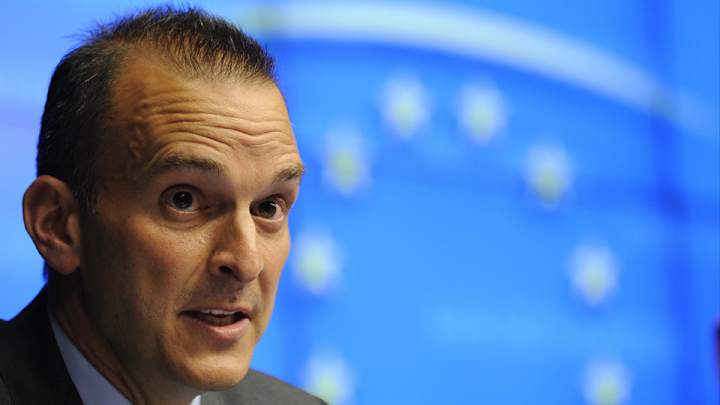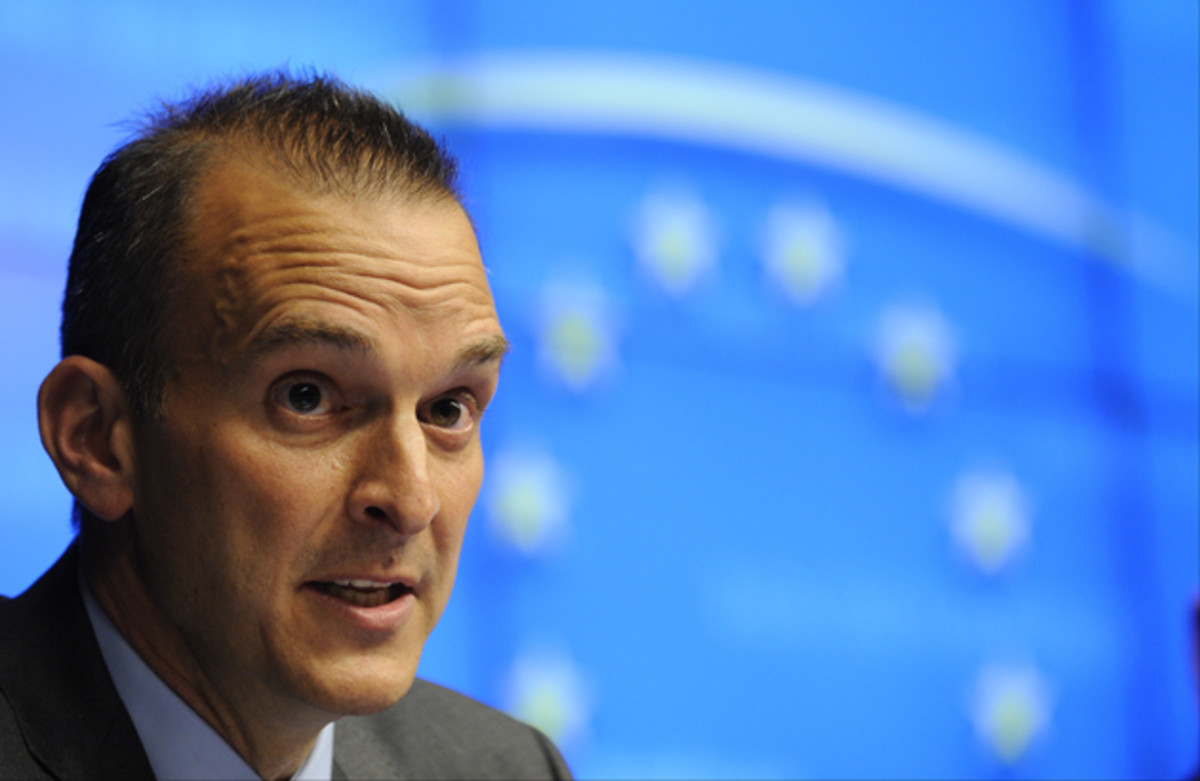Mayweather-Pacquiao drug testing program sets precedent for boxing

LAS VEGAS – The call came around Christmas of 2009 from an unknown number. Travis Tygart, CEO of the U.S. Anti-Doping Agency (USADA), can’t remember exactly when. But he does remember where he was when it came. He took the call at a children’s museum in Denver, while on a family vacation. Someone from Floyd Mayweather Jr.’s camp was on the line. The caller wanted to gauge Tygart’s interest in implementing an anti-doping program for the undefeated welterweight boxer’s next bout, a mega-fight for which most major negotiating points had been agreed to and for which contracts had already been drawn up.
The proposed opponent? Manny Pacquiao, whom Mayweather will fight—almost six years after that call—on May 2.
• BISHOP: Pacquiao-Mayweather is the only treatment for Roach's pain
“From everything I understood, this was the last real obstacle to them arranging the fight,” Tygart said in a recent phone interview. “They wanted to know what a program would look like.”
We all know how that went.
According to Pacquiao’s side, Mayweather’s reps slipped the anti-doping program into the contract in the late stages of negotiations. According to Mayweather’s side, the testing requirement was there from the beginning, and Pacquiao’s advisers continued to take it out. What everyone agrees on, Tygart included, is that there was much confusion as to how the program would work and not much time to explain it to all parties. It was believed to be the first time that professional athletes had attempted to put in place an anti-doping structure before a major sports event, voluntarily.

One person who gathered information for Pacquiao was Nick Khan, the agent for Pacquiao’s trainer, Freddie Roach. Pacquiao feared that testers would draw blood as he walked to the ring. He said, too, that he feared needles, an odd claim, because he already had tattoos.
“There are no exceptions to [when tests are administered],” Tygart told Khan.
“What if both sides agree to no day-of-fight drug testing with a drug test right after?” Khan asked.
“Then I would think one side is cheating,” Tygart said.
USADA referred both camps to the informational documents on the organization’s Web site. They explained why the tests needed to be random, the timing of when blood would be drawn (not on the way to the ring) and how much blood needed to be taken (a small amount). Tygart spent a lot of time unwinding misinformation. But he remained firm on one point. “Unpredictableness is critical for any testing program,” he says.
Pacquiao, who has never failed a drug a test, ended up suing Mayweather and his associates for defamation as it related to performance-enhancing drugs. (The suit was settled in September 2012, under terms that remain confidential.) Mayweather, who has also never failed a test, alluded to Pacquiao’s usage on numerous occasions.
Enter the Cryosauna, the new-age training device of Floyd Mayweather
Mayweather and Pacquiao never came to terms on an anti-doping program, and the super-fight that everybody wanted never materialized—until this winter. USADA testing is part of the agreement. Mayweather has contracted with USADA for every bout since the first Pacquiao negotiations fell apart, since Mayweather fought Shane Mosley in May 2010. The UFC and other mixed martial arts organizations have followed Mayweather’s lead, Tygart said. But boxing, with no national governing body and various levels of commitment from state commissions, has not.
“Unfortunately they’re not doing the job they need to,” Tygart says. “If they were, fighters wouldn’t be coming to us to have a robust program put in place. They wouldn’t if they felt confident in what was there.”
Some of that reluctance relates to budgets, or to the rotation of commissioners who are politically appointed, Tygart said. “But,” he adds, “when you put the nature of the sport on top of it, you need to have people committed to best practices.” Tygart says that USADA attempted to reach out to several boxing commissions in recent years but received little in way of correspondence back. “Our position has been shame on us if we don’t help those who want to put in place a gold-standard program,” he says.
In the gym with Floyd: Mayweather looks serious as he preps for Pacquiao
USADA is not alone. The Voluntary Anti-Doping Agency also puts anti-doping programs in place for boxers. But that’s not enough to fix a sport in which one of the primary goals is for participants to smash each other’s faces. This is, Tygart hopes, a step toward procedures more lasting and more permanent.
Tygart says that both boxers signed contracts that they will follow the World Anti-Doping Agency code. USADA reps traveled to both camps to explain how the process works. They’re tested just like Olympic athletes, and they must provide their whereabouts at all times. It was suggested, Tygart says, that one fighter could request a test on the other fighter, but that’s not true. It was also suggested that the boxers were not subject to Carbon Isotope Ratio, or CIR, tests. He says that’s also not true.
“I really think this is a blueprint,” Tygart says. “It’s already led to a movement. The Nevada folks had a commission meeting. They’re taking about moving some of their policies in the right direction. This is a pretty easy program to put in place. And it’s absolutely the right thing to do.”
For all of SI.com's coverage of the Mayweather-Pacquiao fight, including exclusive photos, videos and more, click here.
Who wins: Mayweather or Pacquiao? in SI Polls on LockerDome
